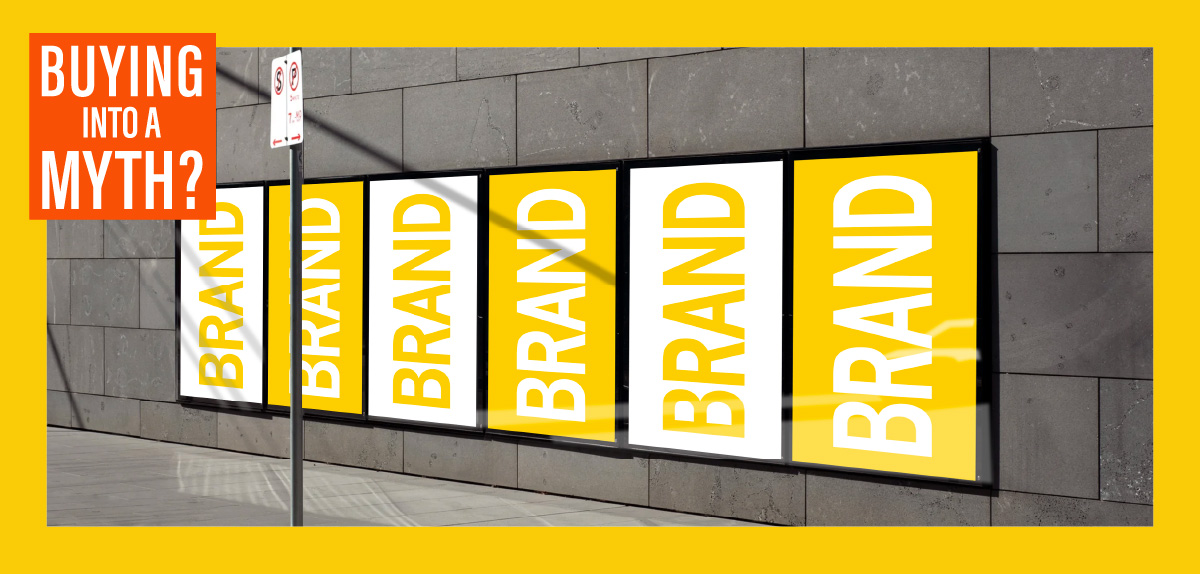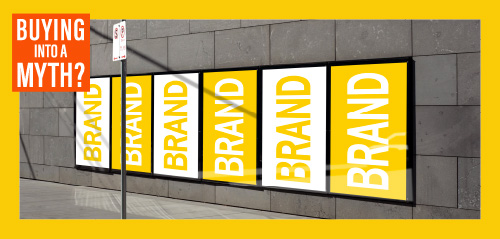
BUYING INTO A MYTH?
Marketing Myth #4: Well-known brands don’t have awareness problems
Contrary to popular belief, name recognition is no guarantee you’ll make a buyer’s short list. Why? Because general awareness only takes you so far. Far more important is situational awareness – or the likelihood your brand will be thought of in a specific category or buying situation.
The more ways people think of you, the better
Because buyers have limited “mental availability,” it’s important to occupy as much of their head space as you can. As renowned marketing data scientist Byron Sharp put it, “The more extensive and fresher the network of memory associations about a brand, the greater the brand’s chance of being noticed.” The key is creating those associations.
Note that traditional measures of awareness can be deceiving – brands may score well on them yet have disappointing sales. It may not be that buyers dislike the brand. They just seldom think of it when it counts.1
The one-trick pony problem
Often awareness issues stem from a brand being known primarily for one thing. Salesforce had this challenge. Few knew how the company could help their business grow through its many software platforms (e-commerce, analytics, etc.) beyond CRM.
To be successful, Salesforce needed to gain mindshare in each of the categories where it competed, across 13 targeted industries, at key moments in the customer journey when buyers subconsciously assemble their list of “usual suspects.”
Elevating your situational awareness
As the graphic above shows, brands not in the initial conversation will have a hard time gaining consideration. So LinkedIn’s B2B Institute recommends an “RMB” strategy:
- Reach: use broad segmentation to find all buyers in your category
- Message: communicate across a breadth of categories, needs, buying occasions and purchase decision triggers
- Branding: use highly distinctive brand assets to build recall3
LinkedIn sees a particular challenge for B2B with branding. The reason is its “buttoned-up corporate culture and short-term sales pressure… tend to extinguish any real prospects of building mental availability – which requires bold creativity and is built incrementally over time.” In their view, only by really investing in effective advertising can you drive more mental associations, situational awareness and long-term growth.
Are you overlooking the importance of building greater situational awareness for your brand? Time to rethink your marketing investments? Let’s talk ›
1 Byron Sharp, How Brands Grow, Chapter 12
2 Harvard Business Review, “What B2Bs Need to Know About Their Buyers,” September 2022
3 LinkedIn B2B Institute, “How Salesforce’s Trailblazer Campaign Builds Mental Availability”
Marketing Myth #1: Demand generation is king ›
Marketing Myth #2: Cutting marketing budgets is wise in a recession ›
Marketing Myth #3: Customer loyalty beats customer acquisition ›
Marketing Myth #5: B2B campaigns should be rational, not emotional ›
Marketing Myth #6: The purchase funnel is still a thing ›
Marketing Myth #7: Marketing is secondary to sales in B2B ›
Marketing Myth #8: Repeating what works will keep on working ›
Marketing Myth #9: Data-driven is always better than people-driven ›




 See what they have to say
See what they have to say